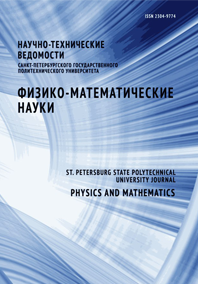Influence of current density, anodization time, and illumination on the thickness of porous silicon in wafers with the built-in p–n junction and its photoluminescence
The formation of a porous silicon (por-Si) layer in a thin p-type layer epitaxially grown on n-type silicon, at two anodizing current densities and different anodizing times is studied and a comparison is made of transverse cleavages, surface morphology, reflection spectra, and photoluminescence spectra. The minimum duration of anodizing (15 and 10 minutes) at current densities of 10 mA/cm2 and 20 mA/cm2, at which a single-layer PS structure is formed, is established. With an increase in the anodization time, regardless of the current density, a two-layer structure is formed with an internal tree-like porous silicon layer, whose contribution to photoluminescence is minimal, and the reflection coefficient drops strongly due to irretrievable losses in the porous tree-like layer.


